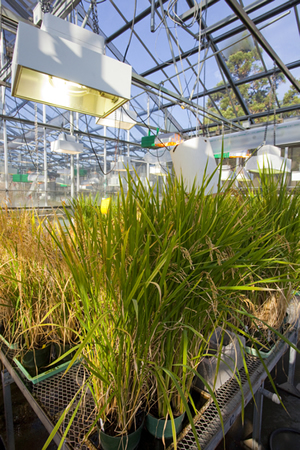Scientists at Lawrence Berkeley National Laboratory (Berkeley Lab) are working on a wide variety of clean energy technologies—from biofuels to batteries to solar energy—but now these disparate efforts are being tied together with an in-depth and innovative analytical approach that will show which technologies are the most beneficial to pursue. The analysis will also give feedback to scientists before a technology hits the marketplace, allowing them to adjust and refine the technology so as to maximize its economic and environmental impact.
This project is the linchpin of a Lab-wide effort, dubbed Carbon Cycle 2.0, which brings together teams of scientists from throughout Berkeley Lab to engage in cross-disciplinary research that will accelerate the development of a carbon-neutral global energy system. The Carbon Cycle 2.0 Energy and Environmental Analysis Team (E2AT), led by Eric Masanet, has been examining the impact these technologies—still in the laboratory, not yet in the marketplace—will have on mitigating climate change, reducing dependence on fossil fuels and creating jobs.
“It’s a fairly new approach for the Lab, to use the analytic lenses we’ve developed to analyze the costs, and energy, water, materials and climate change impacts of technologies that are still in the research and development phases,” says Masanet of the Lab’s Environmental Energy Technologies Division. “The ultimate goal of the work is to provide guidance to scientists, funding agencies, and policymakers about which technology options are the most beneficial to pursue.”

Berkeley Lab's analysis will help make energy-saving "smart windows" more successful in the marketplace.
The team’s analysis will yield an array of useful information for scientists, funding agencies and policymakers, such as whether a technology will reduce energy or water use, whether it will do so cost-effectively, and how the cost-effectiveness varies according to factors such as different climates and geographies, cost of energy and the mix of fuels that supply energy. Furthermore, the team will look at whether the technology will produce additional jobs and revenue, what kinds of barriers it faces to enter the marketplace and the magnitude of the environmental benefits—including reductions in energy and resource use and human health impacts.
E2AT’s toolkit includes cross-sectoral (industry, commercial, residential, transportation) computer models with environmental indicators relating to energy, water, materials and public health. The team will also use energy resource modeling, life-cycle assessment, geographic information systems (GIS), and other analytical techniques. Energy resource modeling looks at the inputs and outputs of technology to measure its total impact—how much energy, water and materials are used to produce a technology—and how these impacts compare to competing technology alternatives.
With its initial funding, E2AT chose to study four technologies in active development at Berkeley Lab: geologic carbon sequestration, next-generation coatings for energy-efficient windows, salt- and drought-tolerant switchgrass for biofuels and large-scale solar photovoltaic installations.
In the case of carbon sequestration, Berkeley Lab researchers Hanna Breunig, Philip Price, Tom Mckone, Curt Oldenburg and Jens Birkholzer are studying the economic and environmental characteristics of large-scale systems to capture carbon at the power plant and inject it into geological reservoirs. The analysis involved looking at saline aquifers throughout the United States, which together are estimated to have the capacity to store between 1,600 and 20,200 billion metric tons of CO2.
The team chose three saline aquifers in different parts of the United States and analyzed the costs and benefits of removing the brine, a necessary step to sequestering carbon. “There are several ways of using the brine from these aquifers,” says Breunig. “The approach is to treat the brine as a resource, using its minerals, energy, and water in applications such as geothermal energy extraction, salt harvesting, and saline algae ponds for biofuels production. Then the brine would be discharged into wastewater treatment facilities or evaporation basins.”
The Berkeley Lab scientists calculated the value of salts that could be harvested at each location, taking into account regional market prices and rates of evaporation. They found the salt at one location to be of far higher value than that of the other two, illuminating how regional variations in economics and climate affect the viability of geologic carbon sequestration.
E2AT is also looking at energy-efficient windows, sometimes known as “smart windows.” One technology being examined is an electrochromic coating that can adjust itself to allow or block varying amounts of infrared radiation while allowing daylight to pass through. During warm weather, for example, the window would not allow the room to heat up while during cold weather, heat gains through the unblocked window could supplement existing heat loads.
The team is quantifying the potential energy savings of this and other window coatings in different regions across the country, considering variations in building stock and climate. Results are helping to define performance targets that would make the coatings successful in the marketplace.
A third pilot project focuses on next-generation biofuels. Converting agricultural crops to biofuel reduces U.S. dependence on oil imports and creates jobs. However, the feedstock for biofuels should not compete with food crops for arable land.

Analysis of land use, weather patterns, population change and other variables will lead to more cost-effective biofuels.
One approach under study through Berkeley Lab’s Joint BioEnergy Institute is to engineer fast-growing crops, such as switchgrass, for marginal, salty agricultural lands that are not in use for food crops. After assessing U.S. agricultural lands, a Berkeley Lab research team led by Larry Dale and Jim McMahon determined that a more drought-tolerant switchgrass could have a greater impact because there are far more dry, unproductive lands than salty, unproductive lands in the U.S. Consequently, early feedback to the biofuels team prompted a shift in genetic engineering efforts to drought tolerance.
“We want to be able to tell the people developing the switchgrass, ‘If you hit these targets for salt tolerance and drought tolerance, you’re likely to have a market size of x billion barrels per year, these are the climatic conditions that are most favorable to the technology and here’s likely to be the cost structure,” Masanet explains. “This is stuff that basic researchers don’t have, robust science-based information to guide their decisions.”
In the fourth pilot project, E2AT scientists are modeling the impacts of deploying large-scale solar photovoltaic installations. Solar PV produces electricity without direct greenhouse gas emissions, so its large-scale deployment should lead to lower regional emissions. But the manufacture of solar PV also requires materials and water. In this project, the team members are studying the interrelationships of avoided emissions, land use, local and global weather change, and human health impacts from large-scale solar deployment, as well as the life-cycle energy use and costs of manufacturing and operating large solar PV installations.
This study projects avoided emissions in the U.S. power grid caused by the high penetration of PV. The team is calculating the avoided emissions of several greenhouse gases assuming different PV deployment scenarios. Because the generation resource mix in different regions of the U.S. varies, the avoided emissions vary significantly. The results will help guide policymakers and solar project developers to make decisions about how to deploy solar PV efficiently and economically.
“In the first year we’ve built up this capacity and our plan for the second year is to solidify it so it becomes institutional at the Lab,” Masanet says. “We now have a model for how this process can work over the long run, how scientists from different backgrounds can work together, how modelers and analysts can better work together, how the whole can be greater than the sum of the parts.”
# # #
Lawrence Berkeley National Laboratory addresses the world’s most urgent scientific challenges by advancing sustainable energy, protecting human health, creating new materials, and revealing the origin and fate of the universe. Founded in 1931, Berkeley Lab’s scientific expertise has been recognized with 13 Nobel prizes. The University of California manages Berkeley Lab for the U.S. Department of Energy’s Office of Science. For more, visit www.lbl.gov.
Read how Masanet and Berkeley Lab researchers are using this analytical model to lower the cost of fuel cells, in “Berkeley Lab to Build Cost Model for Fuel Cells.”
[Adapted from the Environmental Energy Technologies Division website]